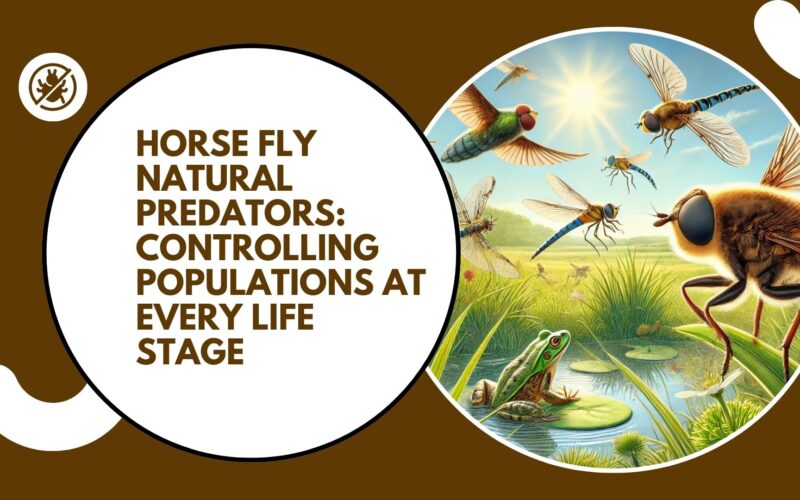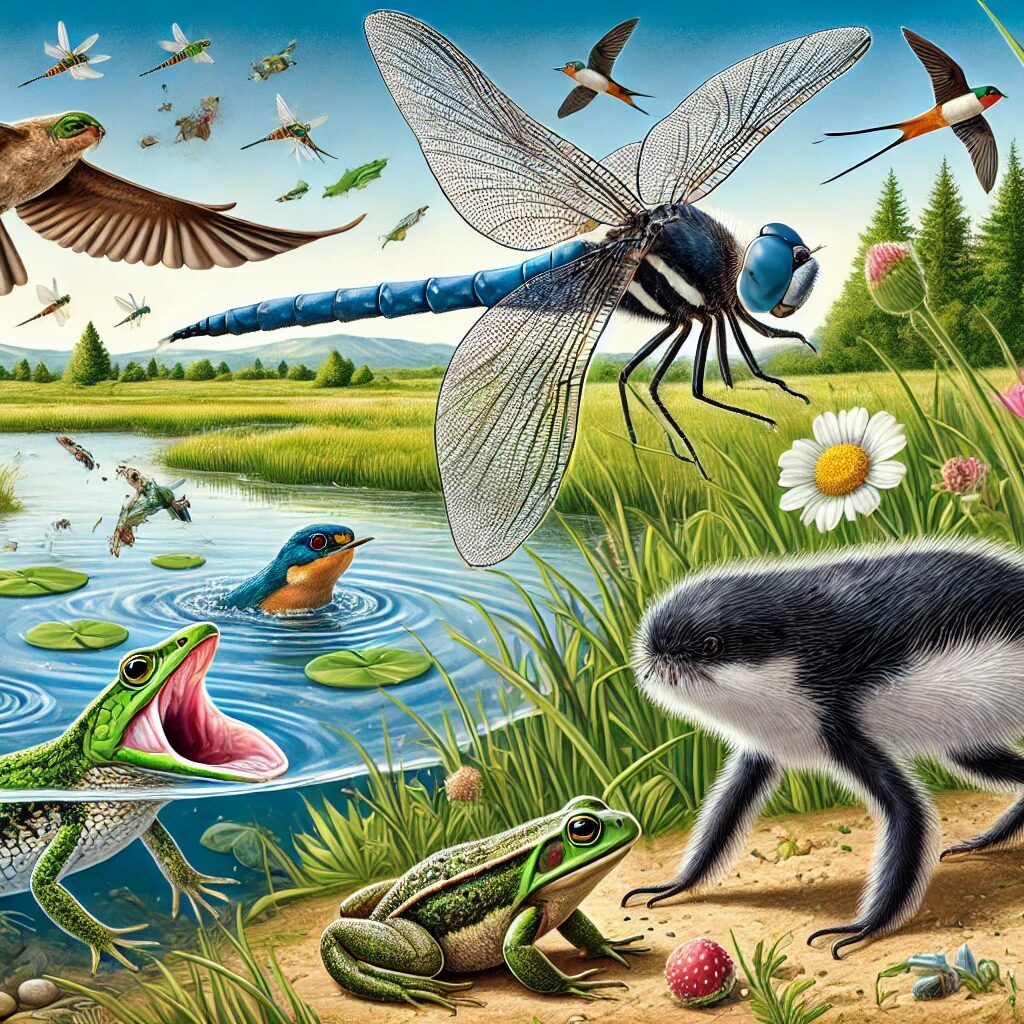
Horse fly natural predators, from stealthy spiders to agile dragonflies, wage a relentless battle against biting pests—discover their tactics at every life stage.
Horse flies are among the most annoying and aggressive pests, especially for anyone who lives in rural areas or near bodies of water. Known for their painful bites, these insects can be quite a nuisance, not just for people, but for livestock as well.
Fortunately, Mother Nature has her ways of keeping these creatures in check. Various horse fly predators play a significant role in controlling horsefly populations at different stages of their life cycle.
Let’s explore how these horse fly natural predators work at every stage of a horse fly’s development.
Horse Fly Life Stages and Associated Natural Predators
Horse flies go through several life stages, including egg, larval, pupal, and adult. Each stage offers its own vulnerabilities, making it easier for different horse fly natural predators to intervene and help reduce their numbers.
Egg Stage
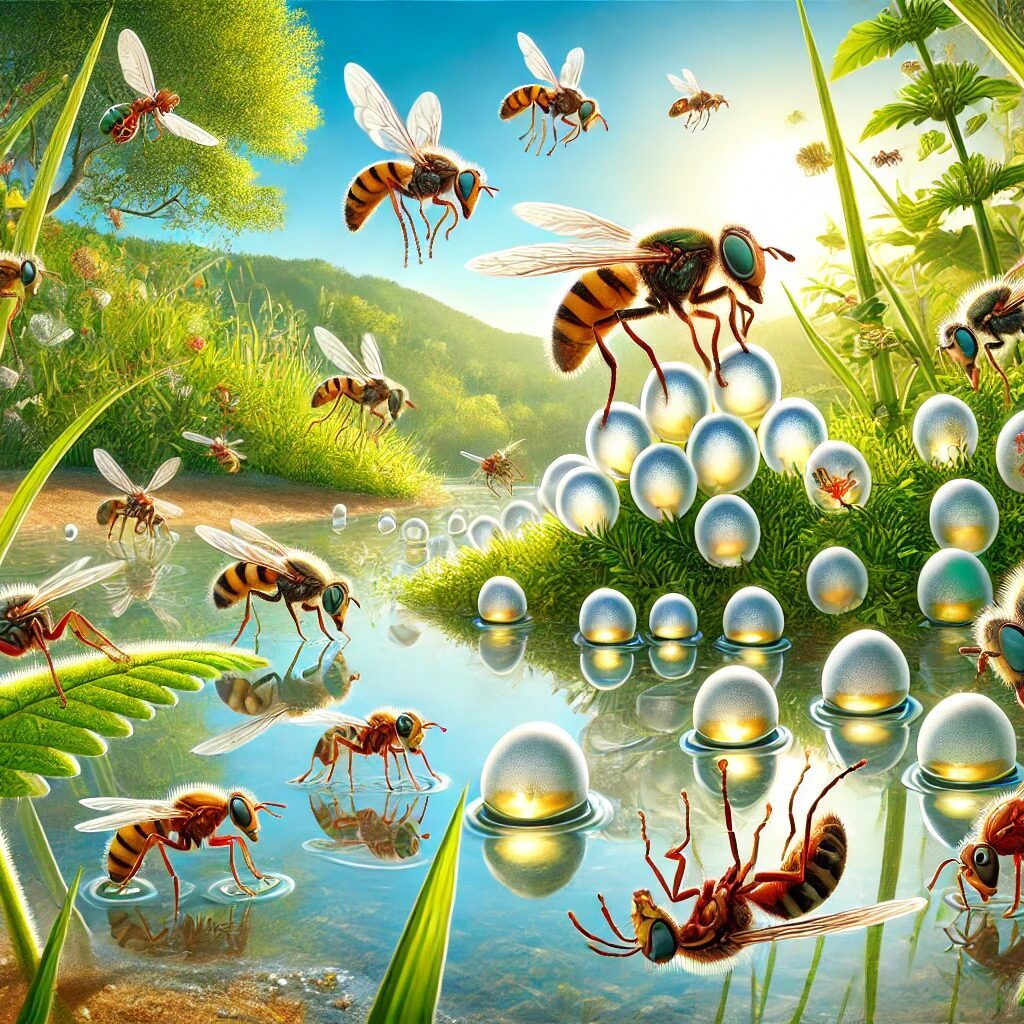
The journey of a horse fly starts as an egg. Female horseflies lay their eggs in clusters on vegetation, usually near moist environments like ponds, wetlands, or marshes. The egg stage is particularly vulnerable, as the clusters are out in the open and easily accessible.
Predators at the Egg Stage
Spiders are one of the main hunters that target horsefly eggs. Often, horsefly eggs are deposited on vegetation where spiders spin their webs. This strategic placement means that as soon as the eggs hatch or even during the laying process, the eggs are easy targets for these spiders, who consume them quickly.
Another group of horse fly natural predators includes beetles, specifically ground beetles. These insects are highly efficient hunters and scavengers, often climbing onto wet vegetation in search of a meal.
Ground beetles have the capacity to eat clusters of horsefly eggs, helping to significantly reduce numbers before the larvae even have a chance to emerge.
Larval Stage
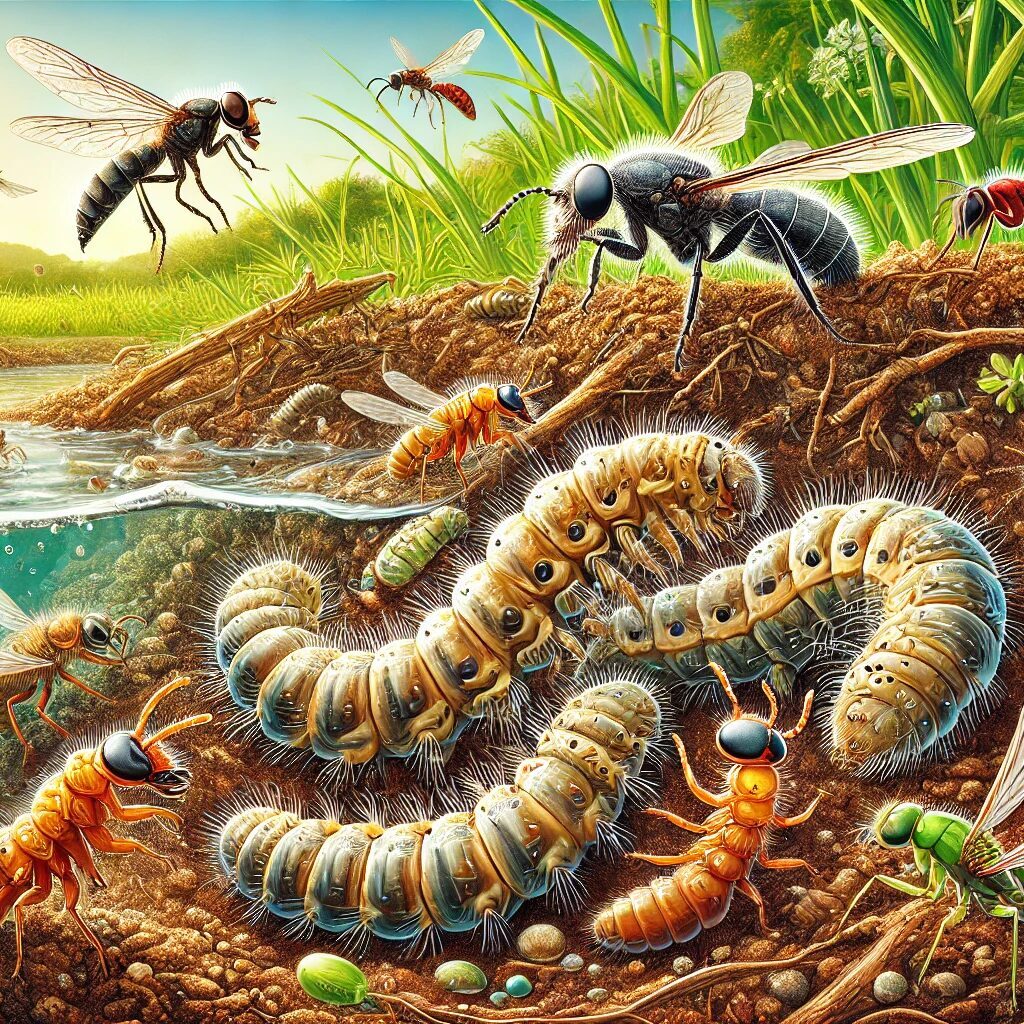
After hatching, horsefly eggs transform into larvae. The larvae thrive in moist environments, typically in mud, wet soil, or decaying organic matter. During this time, they feed on small insects and organic material in their habitat.
Predators of Larvae
Larvae are soft-bodied and slow-moving, making them vulnerable to horse fly natural predators. Ground beetles remain important hunters at this stage. They actively hunt horse fly larvae in the mud and soil, providing a vital check on their population.
Ants also target horsefly larvae when they come across them. Their strength in numbers allows them to carry away or consume larvae efficiently. When ants locate these larvae, they swarm around them, making quick work of their prey.
Birds, especially shorebirds that frequent marshy areas can also feed on horsefly larvae. These birds pick at the moist soil and mud, often consuming the larvae they find. Shorebirds contribute greatly to the control of horse fly populations in areas where water and mud are abundant.
Pupal Stage
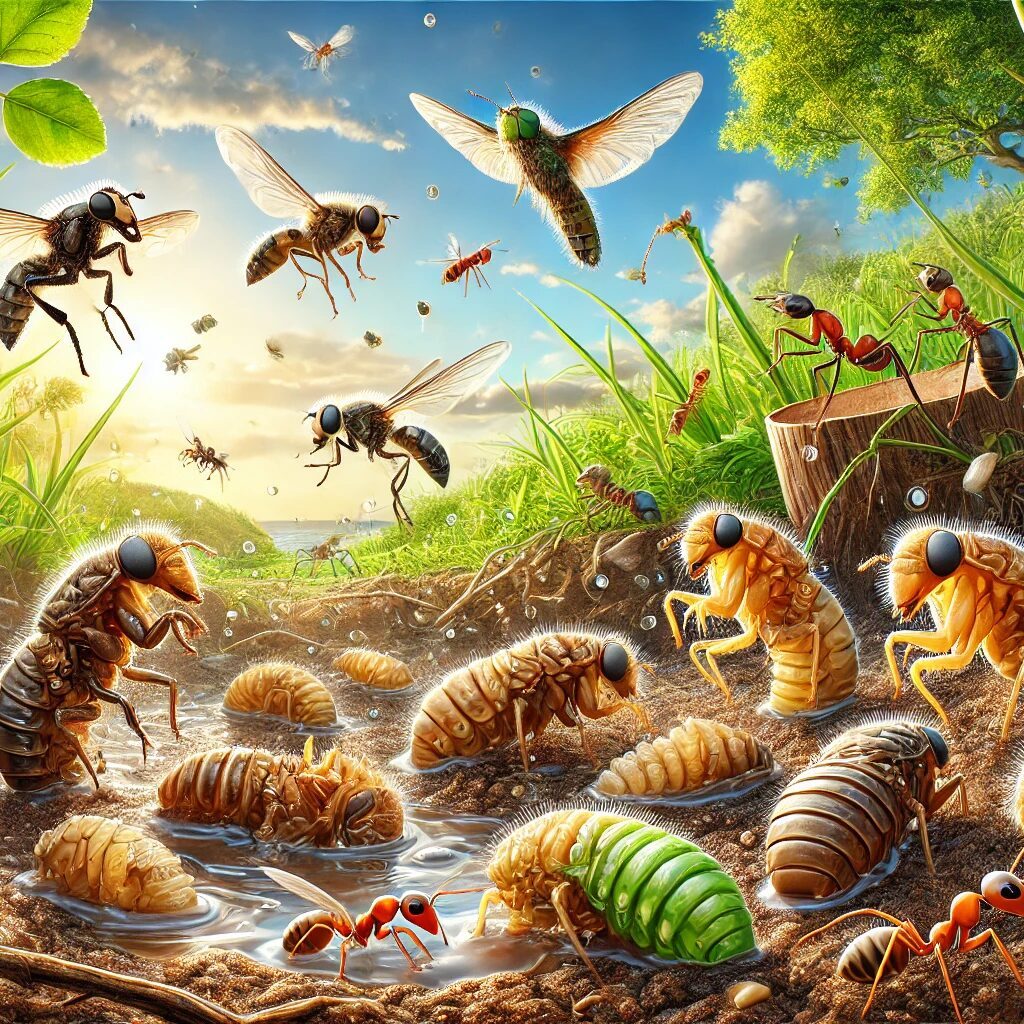
The pupal stage is where the larvae transform into adult horseflies. During this period, they develop inside a hardened casing, usually hidden in moist soil or under vegetation. While the pupal stage provides a bit more protection, they are still not safe from horse fly natural predators.
Predators of Pupae
Beetles continue their role as major horse fly natural predators, targeting the pupae buried in the soil. Since the pupae are relatively immobile, they become easy targets for beetles looking for a nutritious meal.
Rodents, such as mice and shrews, also feed on horsefly pupae. These small mammals often dig through the soil in search of food, and pupae provide a good source of protein for them. By feeding on pupae, these rodents help to keep the horse fly population from ballooning out of control.
Adult Stage
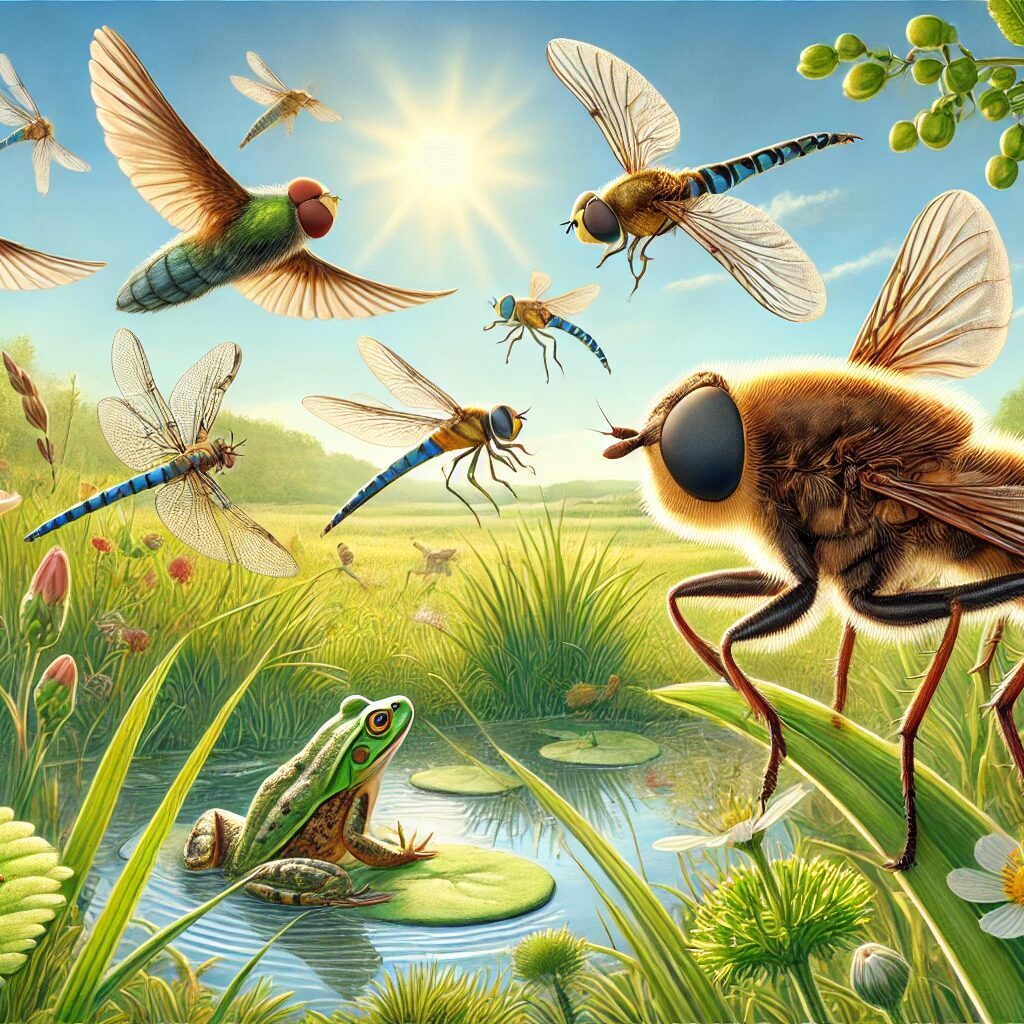
The adult stage is the most recognizable and troublesome phase of a horsefly’s life. Adult horse flies are known for their relentless biting behavior, particularly the females, who need blood to develop their eggs. Despite their agility, adult horseflies are still prey for many species.
Predators of Adult Horse Flies
One of the most effective horse fly natural predators of adult horse flies are birds. Swallows and purple martins are particularly adept at catching horse flies in flight.
These birds are natural aerial acrobats, and their speed and agility make them efficient hunters of flying insects like horseflies. Swallows and purple martins often nest near water bodies, making them well-positioned to prey on adult horse flies.
Dragonflies are another key predator of adult horseflies. Dragonflies are known for their speed and precision in the air, and they can easily catch and consume adult horse flies mid-flight. They serve as a natural form of pest control in wetland areas where horseflies are abundant.
Spiders also prey on adult horseflies, especially orb-weaving spiders. Adult horse flies can get caught in the sticky webs spun by these spiders, leading to their eventual consumption. While this might seem like a rare occurrence, spiders provide an important line of defense against flying insects.
Frogs and toads are also notable horse fly horse fly natural predators. These amphibians often sit near the edges of ponds or marshes, waiting for insects like horseflies to come within striking distance. With their quick reflexes, they can snap up adult flies with ease.
Praying mantises are another predator of adult horse flies. These insects lie in wait for prey to come close enough, then grab them with their strong front legs. They will eat nearly any insect that moves, including adult horseflies.
Lastly, robber flies are fierce insect horse fly natural predators that can capture adult horse flies in mid-air. Robber flies are built for speed and have sharp mouthparts that they use to immobilize their prey. They are capable of taking down large insects, including horse flies, and are an important predator in ecosystems where these pests are common.
Benefits of Natural Predators in Controlling Horse Fly Populations
The role of natural horse fly horse fly natural predators in controlling horsefly populations cannot be overstated. These horse fly natural predators help to reduce the nuisance and harm caused by horseflies, especially for livestock and humans.
Horse flies are known for their painful bites, which can lead to infections, stress in animals, and even a reduction in milk and meat production. Horse fly natural predators help minimize these issues by keeping horsefly numbers in check.
Natural horse fly natural predators also play an important role in maintaining ecological balance. Each predator that feeds on horseflies contributes to a complex web of interactions that keep ecosystems healthy.
For instance, birds that feed on adult horseflies also control other insect populations, while amphibians and small mammals keep soil-dwelling pests in check.
Encouraging Horse Fly Natural Predators in the Environment
One way to help control horsefly populations is by encouraging their natural horse fly natural predators. Creating predator-friendly habitats is a simple yet effective method. Installing birdhouses can attract swallows and purple martins to your property.
These birds are invaluable in controlling flying insects, including horseflies. Similarly, having ponds or other water sources can attract frogs and toads, which will feed on both larvae and adult horse flies.
Another important approach is maintaining vegetation to provide shelter for horse fly horse fly natural predators like beetles and spiders. Ground beetles, in particular, thrive in areas with plenty of ground cover and mulch, where they can find both prey and safety from larger horse fly natural predators.
Minimizing the use of pesticides is also crucial. Pesticides often harm not only pests but also beneficial insects and other horse fly natural predators. You help maintain a healthy population of these predators that can keep horseflies and other pests under control by reducing pesticide use.
Promoting biodiversity is another effective strategy. A diverse ecosystem is more resilient and better able to regulate itself. The presence of multiple predator species ensures that no single pest can dominate the environment, creating a natural form of pest control.
Challenges and Considerations in Using Natural Predators
While horse fly natural predators are effective in controlling horsefly populations, there are challenges and limitations. Environmental factors, such as weather and availability of resources, can impact predator populations.
For instance, a decline in bird populations due to habitat loss will reduce the number of natural horse fly natural predators available to keep horsefly populations in check.
Seasonality also plays a role. Many horse fly natural predators are less active during colder months, which means that horsefly populations might spike during times when predator activity is low.
Balancing predator populations is crucial as well, too many horse fly natural predators might lead to a decline in other beneficial insects, leading to unintended ecological consequences.
Conclusion
Horse fly natural predators provide an effective and eco-friendly solution for managing horsefly populations. From the egg stage to adulthood, horseflies face a range of threats from spiders, beetles, birds, amphibians, and other horse fly natural predators.
Encouraging these natural predators by creating suitable habitats, reducing pesticide use, and promoting biodiversity can help maintain a balanced ecosystem.
It’s possible to manage horse fly populations in a sustainable and effective way, reducing their impact on both humans and livestock when working with nature.
